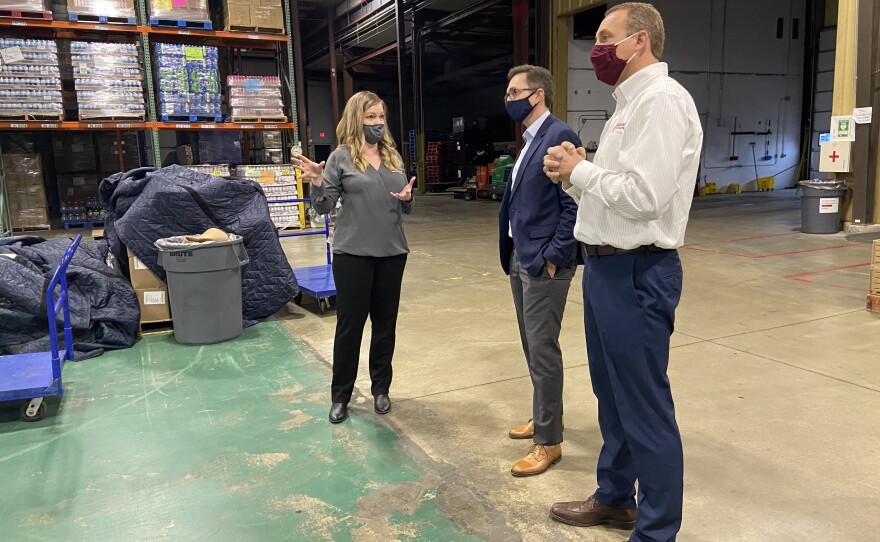The pandemic coupled with the holiday season—and the ever-present need from food-insecure families—make for a busy time at the Midwest Food Bank.
One way the organization is meeting the demand is the U.S. Department of Agriculture’s Farmers to Families Food Box program that pays distributors to package family-sized portions of domestically-produced fruits, vegetables, dairy and meat into grab-and-go containers for food pantries.
Midwest Food Bank Executive Director Tara Ingram said that model is especially helpful during the COVID-19 pandemic.
"If our pantries are wanting to take those, it allows them to just plop a box right into somebody's trunk, so they really could do a contactless type of a distribution, where we can avoid the germs, we can get families the food that they need,” Ingram said.
The USDA recently announced a fourth round of funding for the program that started in May. In addition to supplying families in need with food, the program supports distributors whose workforces have been significantly impacted by the closure of restaurants, hotels and other food service businesses.
The program was set to expire on Oct. 31, but has been extended through the end of the year.
During a visit to Midwest Food Bank in Normal, Brandon Lipps, USDA deputy under secretary for food, nutrition, and consumer services, touted the program as just one of the ways the federal government has helped keep people fed—and working—during the pandemic.
“The Farmers to Families Food Box program has been pivotal at this time and helping food distribution chains who've been disrupted during this unprecedented time, helping keep their folks employed, but keeping that food at a place where it's going to those Americans in need,” he said.
Lipps said he was “overwhelmed” by the efforts of Midwest Food Bank. With just four full-time employees, the food bank oversees around 10,000 volunteers annually. It helps stock more than 500 food pantries—without charging a dime for the food they provide, Lipps noted.
Understandably, demand for help has been especially high in 2020. On top of food donations, Midwest Food Bank has supplied hygiene and clean-up kits to areas struck by natural disasters.
Ingram noted these devestating events are becoming more and more frequent.
“We've sent out over 100 loads of family food boxes and other supplies to different disaster areas this year,” Ingram said. “Our high mark in the past was 55 loads. It just really goes to show how much need there is all throughout our country this year.”
The food bank also partnered with the Salvation Army to keep communities fed during the civil unrest that unfolded in Chicago this summer in the wake of the police killing of George Floyd.
Now, the organization is turning its attention to the holidays. Midwest Food Bank wants to give 2,500 families a Thanksgiving feast with all the fixings—stuffing, green beans, cranberry sauce, etc.
But something's still lacking: the main course.
"Right now, we're in the middle of the process of collecting all the goods that go into those boxes,” Ingram said. “We're pretty well set on the dry goods that go in there, but the turkeys is where we've got some room to fulfill."
Ingram said $15 covers the cost of a turkey for a family in need. Donations can be made to the food bank or Home Sweet Home ministries, the bank's partner for the Thanksgiving food drive.
Ingram said the food bank is well staffed with volunteers through the holidays, but expects they'll need a hand in the spring, after the season of giving has passed.
There's no subscription fee to listen or read our stories. Everyone can access this essential public service thanks to community support. Donate now, and help fund your public media.






